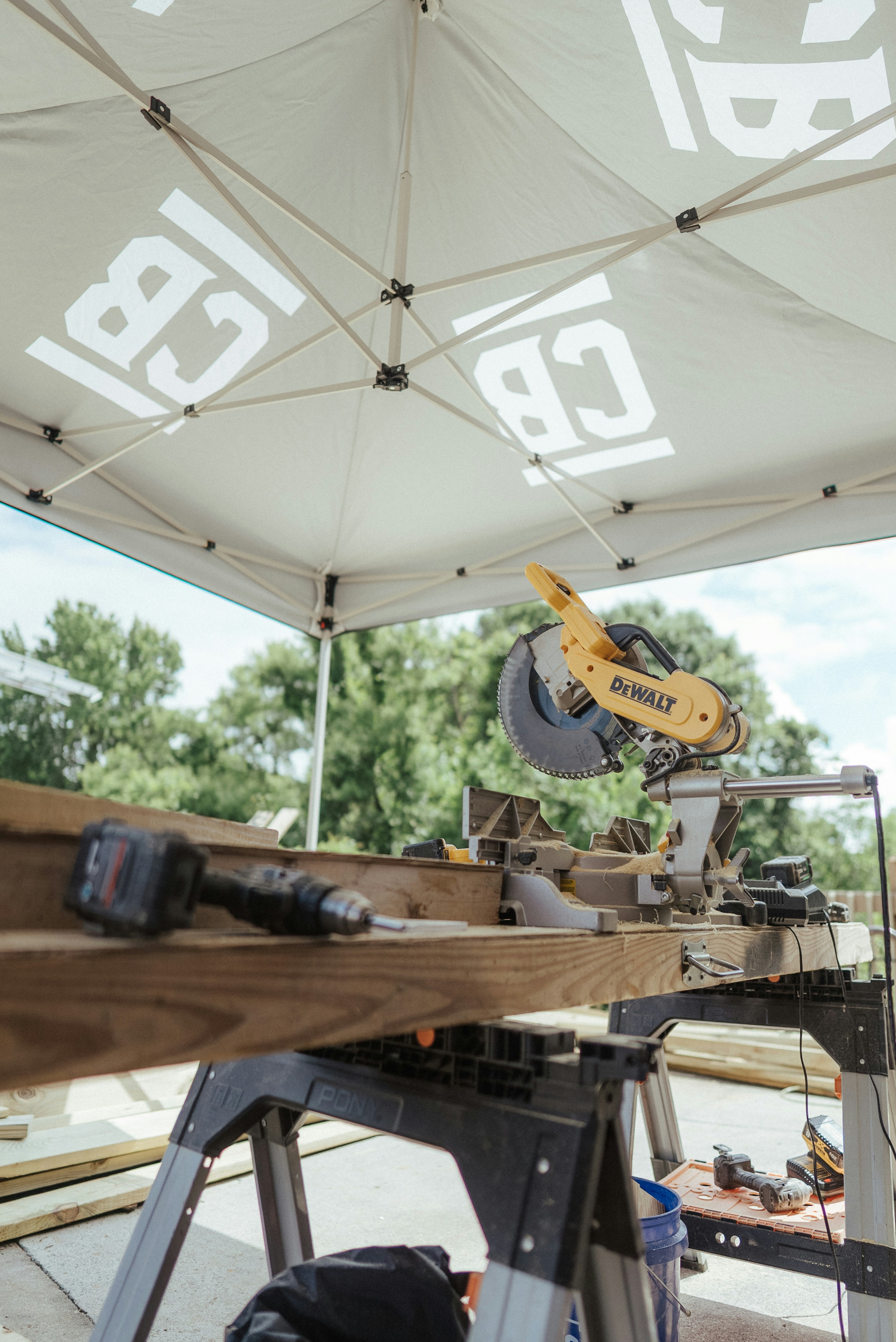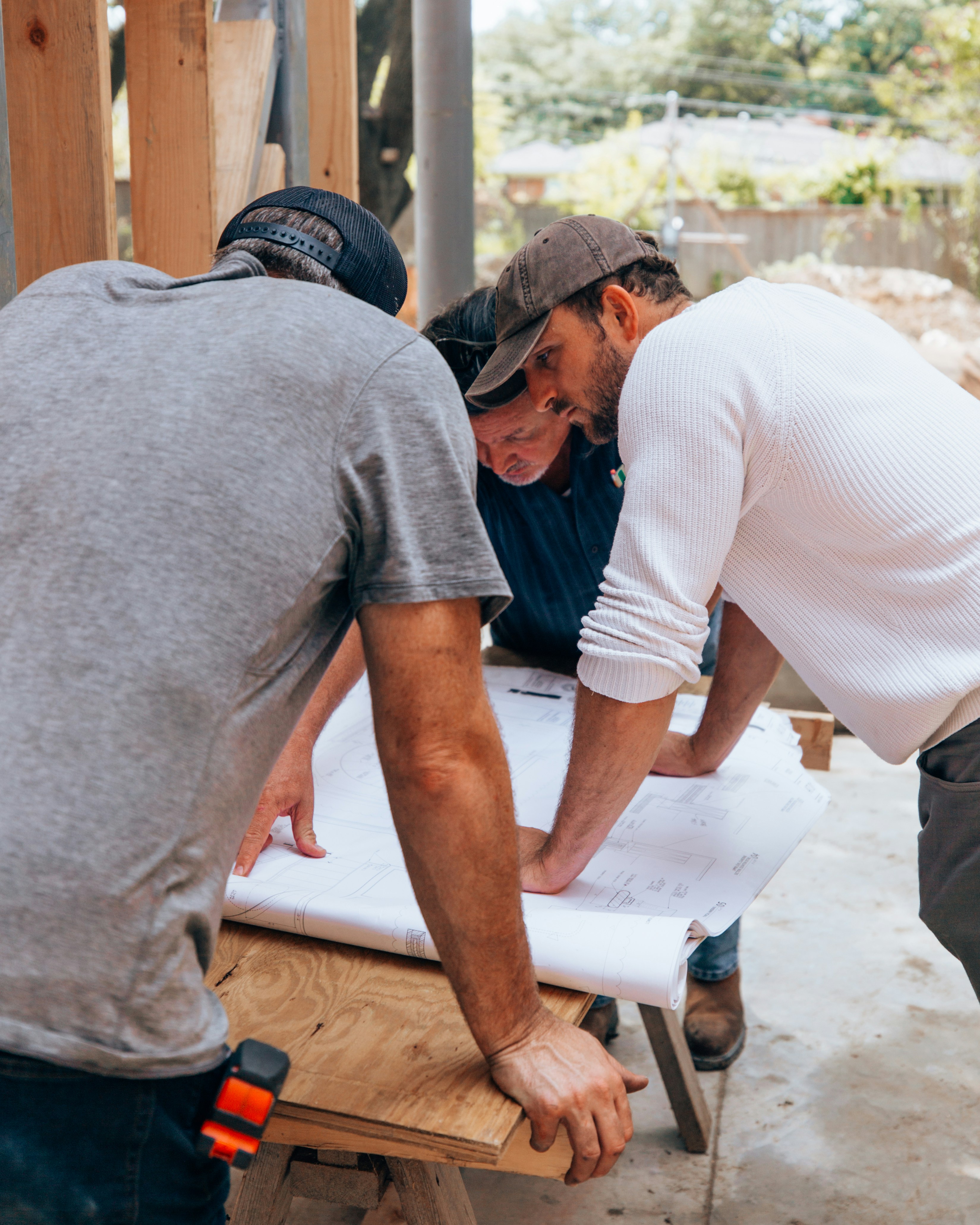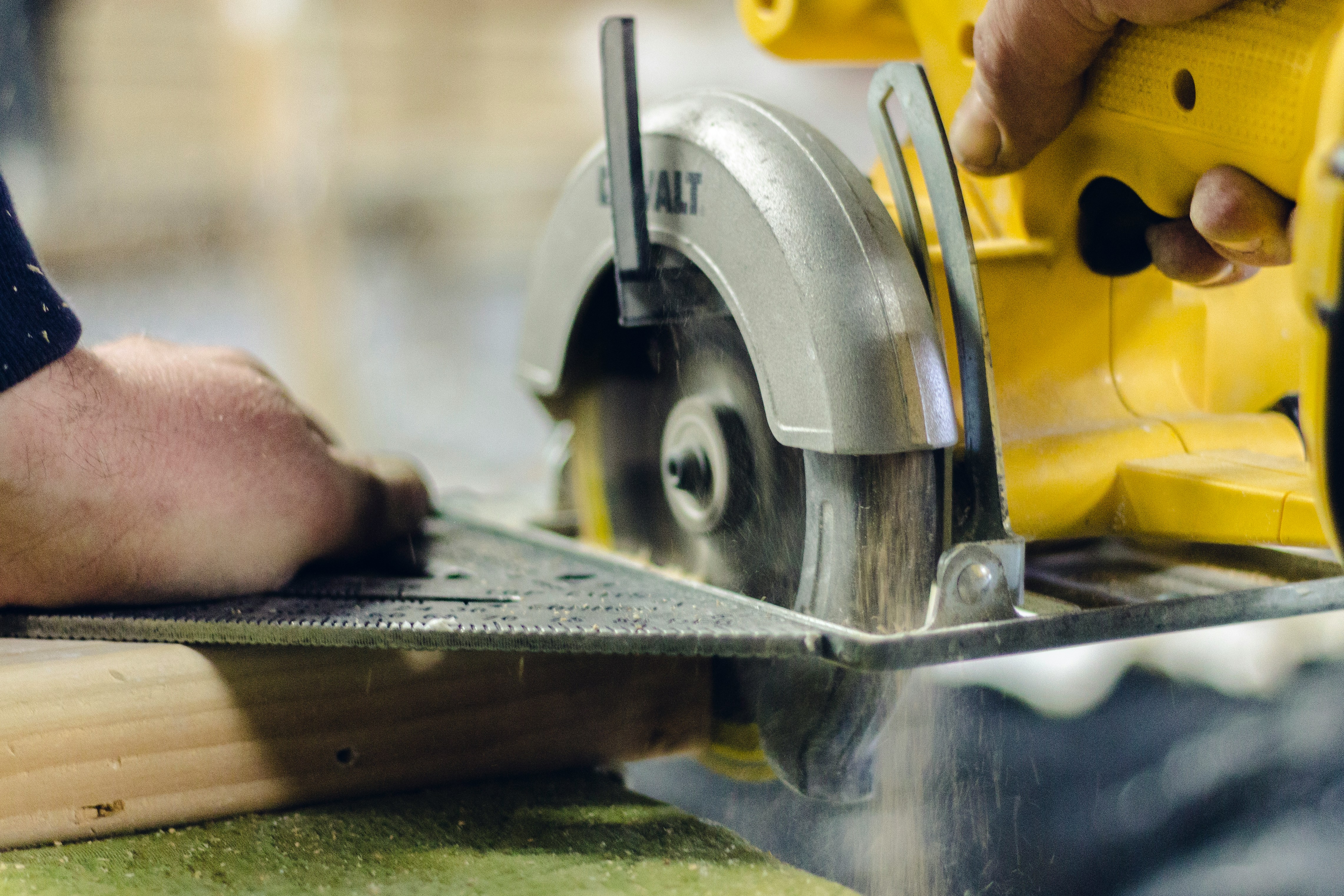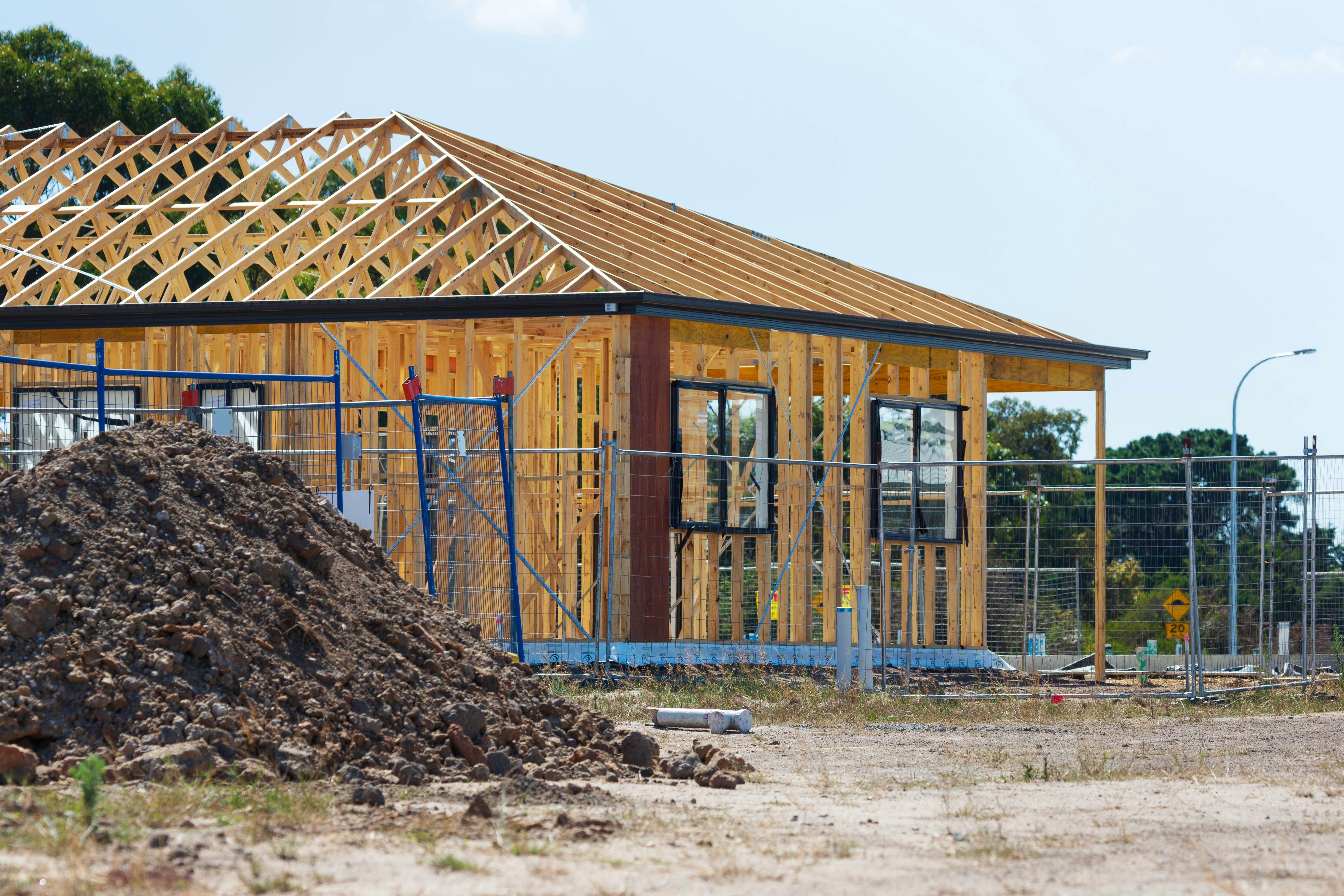The Real Cost of Cutting Fiber Cement Siding

Contractors report spending $3,200-$8,500 in their first year cutting fiber cement siding. These aren't arbitrary numbers—they emerge from a constellation of costs that most discover only after committing to their first fiber cement project.
The material itself tells you something's different the moment you pick it up. At 2.3 pounds per square foot, a single 12-foot plank weighs what three vinyl panels do. But weight is just the opening act. The real story unfolds when diamond-tipped teeth meet Portland cement, sand, and cellulose fibers spinning at 5,000 RPM.
The Equipment Investment Pattern

Here's what actually happens. A contractor lands their first fiber cement job—maybe 2,000 square feet of siding. They own a standard circular saw. First cut, the regular carbide blade lasts twelve feet before the teeth round over like river stones. The math becomes immediate: standard blades at $25 each, dying every 50 linear feet. On this job alone, that's $1,000 in blades.
The market responded predictably. Polycrystalline diamond (PCD) blades emerged at $180-$350 each, lasting 800-1,500 linear feet of cutting. The economics shift—now it's $350 for what would have consumed $400 in carbide blades. But there's friction in that calculation. The upfront cost stops contractors cold, especially smaller operations running job-to-job on cash flow.
Then there's the dust. Crystalline silica, specifically. The kind that OSHA started seriously regulating in 2016.
- Makita 5057KB with dust collection: $479-$550
- PCD fiber cement blade: $180-$350
- HEPA dust extractor (meets OSHA standards): $650-$1,800
- Replacement HEPA filters: $120-$200 each
- Annual filter replacement (heavy use): 4-6 filters
The dust collection isn't optional anymore. OSHA's respirable crystalline silica standard requires either engineering controls (dust collection) or administrative controls (wet cutting). The fines start at $13,653 per violation. One contractor in Denver received three violations in a single inspection—$40,959 for what they called "just doing it the way we always have."
The Time Multiplication Effect

A contractor cutting vinyl siding moves at 45-60 linear feet per hour. The same contractor cutting fiber cement—20-30 feet per hour. It's not hesitation. It's physics. The material demands slower blade speed to prevent overheating. Each cut requires setup time for dust collection. Score-and-snap methods work for straight cuts but fail catastrophically on notches and angles.
This slowdown ripples through labor costs. A two-person crew installing vinyl siding costs $65-$85 per hour combined. That same crew on fiber cement runs $85-$110 per hour because the work requires more experienced installers. The installation takes 2.5 times longer. The labor cost per square foot jumps from $1.50 to $4.25.
Some contractors discovered fiber cement shears—$1,800-$2,400 tools that cut like tin snips on steroids. No dust. Faster cutting. But they only handle straight cuts up to 5/16" thickness. Pacific Northwest contractors report owning both systems: shears for lap siding, saws for trim and angles. That's $4,000 in cutting equipment for one material.
Blade Economics in Practice
The blade replacement pattern follows a brutal logic. Contractors tracking costs report:
Standard carbide blades create a replacement treadmill. At $25 per blade, lasting 50 linear feet, the cost hits $0.50 per linear foot. A typical house with 800 linear feet of cuts means $400 in blades alone. But those aren't clean numbers—the breakdown happens mid-job, requiring hardware store runs that eat hours.
PCD blades shift the economics. The $280 blade lasting 1,000 linear feet drops the cost to $0.28 per linear foot. But contractors describe a psychological barrier. Spending $280 on a single blade feels different than buying ten $25 blades, even when the math favors the expensive option. One contractor called it "writing a check your experience can't cash yet."
The rental market adapted. Tool rental companies offer fiber cement saw packages:
- Daily rental: $125-$185 (saw with dust collection)
- Weekly rental: $425-$650
- PCD blade rental: $45-$65 per day
For contractors doing fewer than five fiber cement jobs annually, rental economics often win. The break-even point hovers around 20-25 rental days before ownership makes sense.
Geographic Cost Variations
The costs shift dramatically by region, following patterns that mirror both regulation and market maturity.
California contractors face the steepest entry costs. OSHA enforcement is aggressive. Cal/OSHA adds state-specific requirements beyond federal standards. Bay Area contractors report total setup costs of $6,500-$8,500 for a compliant fiber cement cutting operation. That includes the saw, dust collection meeting California standards, spare filters, and backup equipment.
Texas tells a different story. Enforcement is lighter. Contractors report running standard saws with shop vacuums, total investment under $1,000. But insurance companies started requiring proof of OSHA compliance for coverage. One Houston contractor's insurance jumped from $8,000 to $14,000 annually after an adjuster photographed their non-compliant setup.
The Northeast created its own ecosystem. Harsh winters make wet cutting impractical five months per year. Contractors invested in heated cut stations—enclosed areas with industrial dust collection. These setups run $12,000-$18,000 but handle the volume to serve multiple crews.
The Subcontractor Emergence

A new business model emerged from these costs: specialized fiber cement cutting services. These operations arrive on-site with $30,000-$50,000 in equipment:
- Dual cutting stations (redundancy for breakdowns)
- Industrial dust extractors with automatic filter cleaning
- Complete PCD blade inventory
- Backup equipment for zero downtime
They charge $2.50-$4.00 per linear foot, turning the fixed costs into variable costs for general contractors. In markets like Seattle and Portland, where fiber cement comprises 40% of new siding installations, these specialists handle 10-15 jobs weekly.
The math works both ways. General contractors avoid equipment investment and compliance headaches. Specialists amortize expensive equipment across volume that individual contractors can't achieve. One Portland operation reports cutting 15,000 linear feet weekly—their $350 PCD blades cost $0.023 per linear foot at that volume.
Hidden Costs Surface
Beyond the obvious equipment costs, contractors identify expenses that only emerge through experience:
Transportation changes when hauling fiber cement. At 180 pounds per 100 square feet versus vinyl's 60 pounds, truck capacity drops by two-thirds. Fuel costs increase. Wear on vehicles accelerates. One contractor switched from a half-ton to three-quarter-ton truck specifically for fiber cement jobs, adding $15,000 to their operating costs.
Worker's compensation rates adjust for fiber cement installation. The heavier material and dust exposure push crews into higher-risk categories. Rates jump from $8-$12 per $100 of payroll to $15-$22. On $200,000 in annual labor costs, that's $14,000 in additional insurance.
Waste disposal costs triple. Fiber cement scraps can't go in standard construction debris containers at many facilities. Specialized disposal runs $200-$300 per ton versus $65-$85 for standard construction waste. A typical 3,000-square-foot installation generates 800-1,200 pounds of waste.
Tool wear accelerates across the board. Contractors report replacing circular saws annually when cutting fiber cement regularly, versus every 3-4 years with wood and vinyl. The dust infiltrates bearings despite protection. Motors burn out from the sustained load. That's $400-$600 in annual saw replacement beyond normal depreciation.
The Compliance Documentation Burden
OSHA requires exposure assessment records for crystalline silica. Contractors must document:
The paperwork seems abstract until an inspection. One Ohio contractor faced $27,000 in fines, not for unsafe practices, but for incomplete documentation. They were using proper dust controls but couldn't prove historical compliance. The inspector's report noted: "Engineering controls in place but no objective data supporting exposure assessments."
This drove another cost: administrative burden. Larger operations hired safety coordinators at $45,000-$65,000 annually. Smaller contractors subscribe to compliance services at $200-$400 monthly. The services provide documentation templates, exposure assessments, and audit support.
Some contractors discovered that manufacturer testing data satisfies OSHA's "objective data" requirement. James Hardie, CertainTeed, and Nichiha provide exposure assessments for specific cutting scenarios. Using these eliminates the need for expensive air monitoring, saving $1,200-$2,500 per assessment.
Market Response Patterns
The cost structure created market segmentation. Premium contractors embraced fiber cement, building the costs into $15,000-$25,000 siding jobs where margins support equipment investment. Budget contractors abandoned fiber cement entirely, focusing on vinyl and aluminum where entry costs remain low.
Mid-market contractors—those doing $8,000-$15,000 jobs—struggle most. The equipment costs erode already thin margins. Many attempt hybrid approaches: renting equipment for occasional fiber cement jobs while maintaining traditional setups for primary business. This strategy often fails. Rental costs eat profits on small jobs, while lack of experience leads to time overruns.
Tool manufacturers recognized the gap. Dewalt introduced a $299 fiber cement circular saw attachment in 2023. It doesn't match dedicated systems' performance but provides entry-level capability. Sales data shows 15,000 units sold in the first year, suggesting significant pent-up demand for affordable solutions.
The attachment strategy proliferated. Dust shrouds for existing saws: $89-$150. Fiber cement blades for standard miter saws: $75-$120. Score-and-snap tools for straight cuts: $25-$45. Contractors cobble together functional systems for under $1,000, though productivity remains 40-60% below dedicated equipment.
The Learning Curve Premium
First-year fiber cement installers report costs 40-80% higher than experienced crews. The overruns aren't just time—they're mistakes with expensive consequences.
Incorrect cutting technique cracks planks. At $35-$55 per damaged plank, a learning crew might destroy $500-$800 in material per job. One contractor described their first fiber cement project: "We bid it like vinyl and cut it like wood. Lost $3,200 on a $12,000 job."
The dust collection learning curve proves expensive. Improper filter maintenance destroys $1,500 vacuum systems. One contractor ran a HEPA vacuum without cleaning filters, burning out the motor in three weeks. Another used standard shop vacuum filters with a HEPA-rated vacuum, negating the filtration and risking OSHA violations.
Blade selection mistakes multiply costs. Using wood-cutting blades on fiber cement doesn't just dull quickly—it can shatter, sending carbide shrapnel across job sites. Insurance claims from blade failures average $8,000-$12,000, often excluded from general liability coverage as "improper tool use."
Technology Adoption Costs
Smart saws with automatic RPM adjustment for fiber cement appeared in 2024. Festool's HK 55 FSK at $850 reads material density and adjusts blade speed accordingly. The technology prevents premature blade wear and overheating, extending PCD blade life by 30-40%.
But technology adoption carries hidden costs. Smart saws require firmware updates. Proprietary blades cost 20-30% more than standard PCD options. Service requires factory technicians at $200-$300 per hour plus travel. One contractor spent $1,400 on repairs that would have cost $200 on a conventional saw.
Laser-guided cutting systems emerged for precision work. At $2,200-$3,500, they promise perfect cuts every time. Reality proves messier. The lasers require calibration after transport. Dust clouds obscure laser lines. Bright sunlight washes out visibility. Contractors report using them in shops but reverting to traditional methods on-site.
Digital cut optimization software calculates minimal waste patterns. At $50-$100 monthly, the software promises 15-20% material savings. Actual results vary wildly. Crews comfortable with tablets achieve promised savings. Traditional installers ignore the software entirely, making it an expensive unused subscription.
The Exit Cost Nobody Discusses
Contractors exiting fiber cement work discover equipment has limited resale value. Specialized fiber cement saws sell for 30-40% of new price after one year. Dust collection systems fare worse—20-30% recovery if HEPA filters need replacement.
The market is thin. General contractors don't want single-purpose tools. Specialists already own better equipment. Rental companies buy only current models with service histories. One contractor described trying to sell a two-year-old fiber cement setup: "Listed for six months. Finally sold everything for $1,800. Paid $5,500 new."
Some contractors report better results selling complete businesses than equipment alone. "Fiber cement installation company" with equipment, customer base, and trained crew commands premiums. Equipment alone becomes expensive garage decoration.
The Numbers That Matter
When contractors calculate total fiber cement cutting costs, patterns emerge:
First-year investment for compliant operation:
- Basic setup (saw, dust collection, blades): $2,800-$3,500
- Professional setup (dedicated equipment): $5,500-$8,500
- Premium setup (redundant systems): $12,000-$18,000
Annual operating costs (100 jobs/year):
- Blade replacement: $2,400-$4,200
- Filter replacement: $600-$1,200
- Equipment maintenance: $400-$800
- Compliance documentation: $2,400-$4,800
- Additional insurance: $6,000-$14,000
Per-job costs average:
- Equipment amortization: $35-$85
- Consumables: $24-$42
- Additional labor: $340-$850
- Waste disposal: $45-$90
The total cost impact: $444-$1,067 per typical residential job beyond traditional siding installation. On a $12,000 fiber cement siding job, these costs represent 3.7%-8.9% of gross revenue. For contractors operating on 15-20% margins, that's 25-60% of profit consumed by cutting-related costs.
The market sorted itself accordingly. Successful fiber cement contractors either specialized completely, achieving volume that amortizes costs, or charged premium prices that support the investment. The middle ground—occasional fiber cement work with minimal equipment—proved economically unviable for most contractors.
These numbers don't argue for or against fiber cement. They simply exist, stubborn and immutable, waiting for the next contractor to discover them one blade at a time.